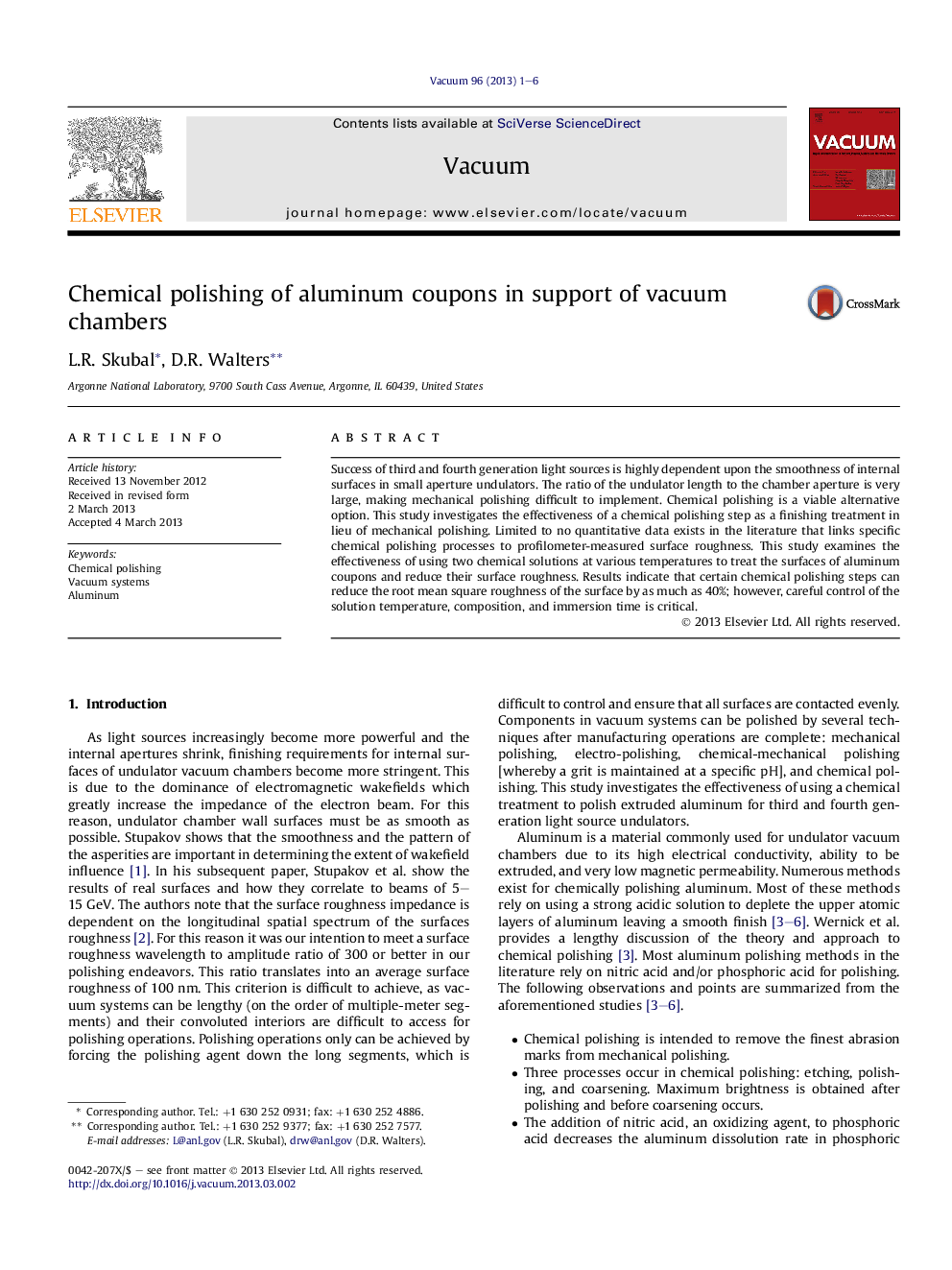| Article ID | Journal | Published Year | Pages | File Type |
|---|---|---|---|---|
| 1688622 | Vacuum | 2013 | 6 Pages |
•Chemical polishing surface treatments are linked to profilometer-measured surface roughness.•Visually specular finishes don't necessarily produce a low surface roughness.•Certain chemical polishing finishing steps reduce root mean square surface roughness up to 40%.
Success of third and fourth generation light sources is highly dependent upon the smoothness of internal surfaces in small aperture undulators. The ratio of the undulator length to the chamber aperture is very large, making mechanical polishing difficult to implement. Chemical polishing is a viable alternative option. This study investigates the effectiveness of a chemical polishing step as a finishing treatment in lieu of mechanical polishing. Limited to no quantitative data exists in the literature that links specific chemical polishing processes to profilometer-measured surface roughness. This study examines the effectiveness of using two chemical solutions at various temperatures to treat the surfaces of aluminum coupons and reduce their surface roughness. Results indicate that certain chemical polishing steps can reduce the root mean square roughness of the surface by as much as 40%; however, careful control of the solution temperature, composition, and immersion time is critical.
